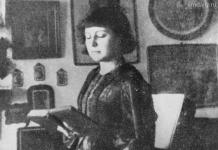Today, a person's value is determined not only by his position, but also by the knowledge he possesses. Few people like stupid and narrow-minded people, preferring to communicate with smart and developed people. And for this we have no right to blame anyone. Self-development, training your brain is the task of every self-respecting person, because if in the last millennium social position could be won by force, becoming one of the greatest warriors, today, in order to achieve success, you need to have specific knowledge and skills.
“The illiterate people of the 21st century will not be those who cannot read and write, but those who cannot learn and relearn.”
Alvin Toffler
This means that by focusing only on your strengths, you risk overestimating your own strengths and failing. In addition, at this moment there is a risk of forgetting about your weaknesses, which also need to be worked on. Today we will talk about how you can continuously and effectively develop your brain.
1. You need to think differently to keep your brain active.
Your brain thinks differently depending on the problem it needs to solve. Indeed, depending on the specific case, one type of thinking may be much more effective than another. By using only one type of thinking, you risk starting to look at the world in a very narrow and one-sided way.
Edward de Bono created the Six Thinking Hats method. The psychologist believes that we should challenge our brains to find the most effective solution. You must learn to think using every type of thinking to develop your brain: for example, relying not only on deduction, but also on instincts, critical judgment, intuition, analysis. By choosing the right type of thinking, brain activity increases dramatically.
The theory that we use only one hemisphere for mental activity is absurd, because for this we need the entire brain.
“The brain is inherently whole.”
Ed Herrmann
Neurons throughout the brain are interconnected, and the brain is fully active during mental activity.
In their book, The Whole Brain, Ed Herrmann and his daughter Anne describe the four main thinking styles that drive people: administrator, talker, problem solver problems, dreamer. And they all correspond to the four quadrants of the brain. Most people think that only one is dominant.
Some of us tend to focus on the big picture to find the answers we need; others look for clues in the details: each of us thinks individually. The artist thinks in his own way, the detective - differently; poets and philosophers also developed an individual type of thinking. But what if you could adopt the mindset of each of these people?
2. Detectives use logic and deduction
“I believe that the human brain is initially like a small empty attic, and you have to fill it with the furniture you choose.”
Sherlock Holmes
Detectives rely on attentiveness, observation and logic in their work. Their minds must always remain open to purity of judgment, and these people learn not to judge, but to observe.
Maria Konnikova, author of Master Mind: Thinking Like Sherlock Holmes, explains how mindfulness helped the famous detective focus on the details that really matter. Holmes observed the facts without any prejudice. The detective concentrated on finding connections and analyzing everything he saw. He applied the principles of deductive reasoning.
Dr. James said, “What is a detective story? This is not murder, but restoration of order.” Sometimes you will have to take a step back in order to understand the nature of certain phenomena, the pattern of people's behavior, the reason for their actions. To think like a detective, learn to do the following:
1) Observe without judging.
2) Write down your hypothesis.
3) Go back and allow your mind to create connections between events and facts.
4) Be aware of your own biases.
5) Support your hypothesis with rigor, facts and objectivity.

3. Philosophers are masters of questions
“If you can't explain something simply, you don't understand it well enough.”
Albert Einstein
Philosophers, unlike detectives, are not trying to solve a crime, but want to understand why it was committed. They seek answers to such abstract questions as: “What is freedom?” or “What does it mean to live?” Philosophers are not afraid to challenge their brains by thinking in a different way than most people. Each of us can become a victim of our own stereotypes, because our brain supports the idea with which it is familiar.
In the world of philosophy, it is not so important to be able to find answers, but it is necessary to ask the right questions in order to ultimately get to the truth, to the original intention.
To develop your brain in this direction, do the following:
1) Don't take anything for granted
2) Use your daily experiences as motivation to challenge your beliefs.
3) Identify the weakness in the argument and exploit it
4) Try to change the problem before solving it
5) Constantly explore new views and hypotheses
4. The sculptor gets rid of the unnecessary in order to reveal the essence to the world

“I saw an angel in marble and carved until I set him free.”
Michelangelo
Sculptors observe, not the object, but what it can be turned into. These people see not just a piece of marble or a block of wood, but an angel, a beautiful maiden or a mythical animal. Their task is to get rid of unnecessary details in order to create something beautiful, to extract the essence of the subject.
Michelangelo said, "Every stone has a statue within it, and it is the sculptor's job to reveal it."
The sculptor looks at the stone from different angles to transform it into a masterpiece. He looks deeply, knows how to see the whole picture in something, at first glance, ugly. So you must learn to look deep into things, to search true essence rather than relying on what you see with your eyes.
To be able to see the essence, you must do the following:
1) Look at the possibilities, not the reality
2) Focus on eliminating unnecessary things
3) Don't work on the details before you understand the "essence"
4) Extract the unusual from the general
5. Journalists are skeptical and inquisitive.
"If your mom says she loves you, get confirmation from at least two independent sources before you believe her."
Anonymous
Journalists are looking for sources to verify any facts. A lazy person will be content with two - a professional will interview a dozen people to draw any conclusion. Journalists are trained to ask questions, to be more inquisitive than the next person.
“Gradually I realized that people would swallow lies more easily than truth, as if the taste of lies were homely, appetizing.”
Martha Gellhorn
The work of a journalist is extremely difficult, and these people face constant competition. Therefore, when reporting the latest news to the world, professionals want to rely on facts so that their sensation does not become another jaundice. The search for truth requires skepticism and curiosity.
To think like a journalist:
1) Do not rely on the first search results
2) Look for various sources, especially opposing ones
3) Never trust your sources, doubt them again and again
4) Facts are not history. There are many facts, but only one main story
5)Your reputation is everything. Don't risk it for short-term glory

6. Writers describe what other people are doing.
“When the mind doesn’t have enough pictures, it invents its own.”
Gary Snyder
Poets think in images, not words. A writer's creativity is a conversation with his mind, a search for solutions to many questions. You invent a situation and then try to find a reasonable way out of it. A writer's work rarely begins with a final idea - usually it is a creative process in which thoughts come at the moment of work, there is only a certain skeleton of one great idea on which the author strings thoughts.
The author makes words not only convey thoughts, but creates images, pictures in the reader’s head, makes him think and think. Curiosity, imagination and the desire to come up with something new can give your brain unprecedented possibilities and perspectives.
To think like a poet:
1) Think in images, not words
2) Play with sounds, rhymes and crazy images
3) Experiment with words
4) Free yourself; visit unusual places you have never been to before
5) Take time to pause and observe
So, have you been asked to think outside the box at work, or do you need a really creative idea for your new book? Don't worry! Thinking outside the box, like any skill, can be developed through constant practice. To start developing your creative thinking skills, start with step 1.
Steps
Part 1
Come up with creative solutions- Take a shower. There is something strangely fateful about this, since everyone had a wonderful idea in their soul (only you forgot it until you finally got to pen and paper). If you're excited about an idea, get in the shower, but don't forget to take a pen and paper with you and see where it takes you.
- Take a walk. Just like showering, something about hiking sparks creativity. It doesn’t matter what kind of walk it is - to start a creative project or already part of it, it will help free up many non-standard solutions. Steve Jobs organized brainstorming sessions on walks. Tchaikovsky walked around his village several times before he began work on his best work.
- Create psychological distance between your daily routine and time for creativity. Writer Toni Morrison always watched the sunrise before she began writing. She felt that this awakened creativity in her.
-
Brainstorm. Discussing the nuances of different ideas, especially those that seem a little out of the ordinary, is a great way to come up with a really good solution. Brainstorm helps you open your mind so that you are not trapped in old thought patterns.
-
Remodel the problem. Part of finding creative solutions and ideas is looking at the problem from a different angle. This gives you the opportunity to see others possible solutions that you haven't taken into account before. Luckily, there are some specific modeling tools you can use.
- Turn the problem upside down. This can be done literally or figuratively; Flipping a picture can help you understand it better, because your brain, in its usual place, will find other components where there were none before. This works for most fundamental problems.
- For example, if you're writing a book and you can't figure out how to introduce a main character into certain parts of the story, ask yourself, “Should this character be the main character? what would the story be like with a different main character? Or with more than a few heroes?"
- Work backwards. Sometimes you need to focus on the resolution first, and then build actions from there. For example, let's say you work in the classifieds department of a newspaper. The newspaper is losing money because it doesn't have many advertisements. Start with the end in mind, the best way is to have a lot of ads of the right type. Based on this goal, contact those businesses and people who can give you the best, most cost-effective advertisements.
-
Dream. Dreams give you the opportunity to make connections, form patterns, and recall information. This is the key to thinking outside the box, as dreams can help you draw parallels that you may not have even considered. So your best ideas may come to you out of nowhere while you're daydreaming.
- Give yourself time to dream. Turn off your computer, TV and phone. If you are periodically distracted, it will be much more difficult for your brain to rest and connect information together.
- You can daydream while walking or taking a shower (another reason to take time out for a walk or shower, it can get you thinking creatively). Dream in the morning before you get out of bed, or at night before going to bed.
-
Set options. When you find it difficult to think outside the box, give yourself some basic metrics. This may seem like it will hinder your creativity, but if you set yourself the right parameters, you will find that it can help you get into the right frame of mind.
- If you set yourself a goal that is too big, it will put pressure on you. For example, instead of saying, “How can I increase ad sales,” ask, “How can I convince businesses to place their ads in our newspaper?”
- You need to bet open questions and consider many possible solutions, but you must tie your thoughts to a specific issue or task. This will help you get more specific ideas.
- Another example: Instead of asking yourself, “How can I make my novel different from others on the market?”, consider the individual parts of the story: who main character? Is the main character just like the other characters (white, heterosexual, good looking, but doesn't know it)?; or if it's a fantasy novel, then “what magic system? Is it magic or uncertainty?”
- Or you can tell yourself that you should rewrite an episode in your story, only now the character won't have access to magic. How will you get out of the situation?
-
Think through the worst-case scenario. Fear kills creativity. Fear forces you to take steps that you know well. When you think through worst-case scenarios, you not only prepare for them, but you can also convince yourself that the bad scenario isn't so bad that you shouldn't try.
- Example for the classifieds person: You might be wondering what would happen if you tried to implement a new creative scheme that you were going to offer to long-term partners (e.g. the best place on the page, highlighting, discount, etc.). Perhaps the worst that can happen is that no one will accept the offer, or you will lose money. Come up with a plan for what you would do with this result.
- Example for writing a novel: Your worst case scenario is that a publishing house or agency will not want to sell your novel because it is a clone of a previous bestseller.
Part 2
Supporting out-of-the-box thinking in the long term-
Change your routine. Creativity requires that you not get stuck in the same routine every day. Even the smallest changes can be a big help in pulling you out of your everyday life and developing innovative thinking.
- Get out of your comfort zone. Doing this, especially doing something you didn't plan on, will help you cope better with new situations. It also helps open your mind to new thoughts and situations that can open you up to new, out-of-the-box thoughts.
- Be spontaneous. Do things by accident that you didn't plan. This will force you to adapt to the moment and solve problems on the fly. You can even link it to your current project.
- Change small habits. For example, take a different route home from work every day. Go to a different coffee shop every morning.
-
Explore another field of activity. This can show you how people in another industry work and give you the opportunity to incorporate their ideas into your business. The field may be completely different from or overlap with yours, but it should be different enough to give you a fresh perspective on your own.
- For example, a person dealing with advertisements can look for topics on psychology or look into the features of the business from which he is waiting for advertisements.
- A novelist should read literature beyond his chosen field (for senior school age, for example), and look towards science fiction, mysticism and classics for inspiration.
-
Learn new things. The more you expand your horizons, the more connections and analogies your brain can make. The more information your brain has access to, the more ability it has to generate creative solutions.
- Take training in a subject outside your field. This could be anything - from cooking courses (if you are not a chef) to a rock climbing club. The writer will be able to use the cooking experience gained in his story (people who feel like they know what they are doing and don't follow instructions will be contrasted with those who carefully follow the exact directions of the instructions).
- Explore new language. Not only will this keep you sharp and form new connections, it can also open you up to new ways of thinking. The ad person can use this experience to start a bilingual ad section to attract large quantity of people.
Part 3
Creative interaction with other people Ideas do not exist in a vacuum. Even unconventional thinkers like Salvador Dali (for example) began by drawing out ideas they received from earlier sources. Taking other people's ideas into account will help you develop your own.- You will see how other people can think outside the box. Learning about the patterns and ways of thinking of others will help you prevent your own thinking from becoming stagnant. You might even say to yourself, “How would my creative artist friend see this ad problem?”
- You can also look at the ideas of famous innovators. Study what ideas they had that worked and what ideas didn't work. Look at their practices for developing creative thinking (for example, Steve Jobs, Tchaikovsky and Toni Morrison from the first part of this article) and try to apply their practices.
-
Learn to listen. One way to learn to think outside the box is to remain quiet and listen to what other people are saying. This is a great idea, at least because you can actually hear what other people are saying and not present ideas that have already been expressed. It will also help you organize your thoughts before you voice them.
- For example, a classified ad guy tries to sell ad space to an entrepreneur who actually hates the newspaper. If the employee does not listen to the entrepreneur's objections (for example, he thinks that his advertisements were not given priority and he does not like the content of the newspaper), he will not be able to persuade the business to place an advertisement with him. And this enterprise can then become part of a scheme to attract dissatisfied customers back.
-
Remember, you will be presenting ideas that may deviate from the “normal.” This is something you need to keep in mind when involving other people, especially in business relationships. Sometimes unconventional ideas are not the right ones to solve a problem.
- It's also good to remember that your ideas may not work. This is fine! This is part of the learning process and therefore you must take worst case scenarios into account when you propose your solution.
Change your environment. It is important to get away from the usual routine to cultivate creativity. The thought of such a change is already an important step towards creative thinking. This means that you either need to create a special ritual related to creativity, or simply find a way to distract yourself and take a break from your routine.
- You need to be hungry to learn things that are outside your comfort zone. It's very refreshing and you can find new interests and meet new people.
- Read something outside of your usual genre. For example, if you think you “hate” detective fiction, why not read it? You may be pleasantly surprised, and even if you aren't, it will add variety to your thought process.
Nowadays everyone should be able to think outside the box and creatively. This applies even to those people who do not consider their profession to be creative. Non-standard solutions and employers in any field expect fresh, unusual ideas from their subordinates.
In addition to work, every day we are faced with situations that require immediate decision-making. And most often it is non-standard, unusual and unexpected decisions that have a positive impact on the development of events.
General and directed creativity
General creativity is about lifestyle and way of thinking. But directed creativity concerns a specific area of activity. For example, work and professional qualities. You can develop non-standard thinking separately, both general and professional. But still, it is impossible to completely separate them. That's why best results can only be achieved by developing both general and directed creativity.
5 stages in developing lateral thinking
When developing creative, creative, out-of-the-box thinking, it is very important to always remember that Creative skills and absolutely everyone has the makings. They just manifest themselves differently. And the degree of stereotypical thinking is also different for everyone.
Don't be afraid or ashamed of your ideas
The first and most important recommendation is not to be shy about your ideas, even the stupidest and most ridiculous ones. Many people are so complex in this regard, and are so afraid of seeming ridiculous, that they try to extinguish all their ideas even before they arise.
Set aside separate time for reflection
In order to learn to think outside the box and creatively, it is very important to leave time for reflection. There are a lot of thoughts in my head, they change every split second. And we don’t always have time to think about them and sort them. That is why there should be at least a little time in your daily routine when you are not busy with anything, but simply thinking, even if not about anything specific. Perfect option if these are walks in the fresh air all alone. This should not be a walk from a stop to work, it should be a separate time allotted. When you don’t need to rush anywhere and don’t need to be distracted by anything. If no thoughts come into your head, then you can simply think about the events that happened.
Give free rein to your imagination
For many next tip may seem stupid, but nevertheless, it is very effective. Sometimes you need to go through different scenarios of events in your head. These can be fantastic events, or realistic ones. Sometimes you can come up with scenarios with negative events and try to come up with a way out of all current situations.
Write down ideas
In order to learn to think creatively, you need to write down all your ideas on paper. To do this, it’s worth keeping a separate notebook that will be dedicated to ideas and plans. And even if you don’t constantly re-read it, it will have an effect, since what is written with a pen on paper is stored in your head. Why write down all the ideas and how it will affect more developed thinking? The answer is very simple.
Our brain cannot remember everything at the same time, and some things are forgotten, sometimes people forget what they wanted to say a minute ago. Therefore, all the ideas that come to mind must be written down, even if at first glance they seem crazy. Our brain works even in the subconscious. And perhaps a slightly modified crazy idea will become the most brilliant.
Also, in addition to ideas, it is important to write down interesting things that you would like to do. It doesn't have to be a daily or weekly work plan. You need to write down exactly those things that you do not do in Everyday life, but I would really like to try (for example, draw or make a certain bracelet, or bake cookies according to an unusual recipe, or play billiards or bowling, or jump with a parachute).
Experience and practice
Nothing good can happen by accident. Only bad things happen by chance. And everything good is the result of work and practice. The more you come up with different ideas, the more practice your brain will have. The more you simulate different situations in your head and come up with solutions (even unrealistic and impracticable), the more your brain will be focused on solving problems and finding the best way out. If you touch professional activity, then we can say that brilliant ideas do not appear out of thin air, they appear as a result of long-term practice and experience.
Some important tips for developing creativity
- There is no need to try to come up with something completely new, it is almost impossible. You can simply try to combine incompatible things. This will be new;
- Look at familiar things with different eyes. Come up with unusual uses for standard things;
- Try to look at any situation from a different side or from a different angle. Do not accept unwanted information categorically. Perhaps if you look at it from the other side it will not be so negative, it is important to simply find the right angle from which to look at it;
- Try not to give your first impression instantly. Perhaps it is wrong. But it is imperative to remember the first impression;
- Do crazy things that are difficult for you to decide on;
- Travel, get to know other peoples and traditions. This significantly expands the stereotypical framework and changes the worldview;
- It is very important to have clear plans and goals. Creative clutter has nothing to do with creative thinking. Usually creative and creative people always have very specific and clear plans and goals;
- Always come up with several ways out of the current situation. Analyze and weigh each of them. Even if you definitely like one, you shouldn’t neglect the others, at least you definitely need to think about them;
- If possible, supervise children. Children come up with the most spontaneous ideas, they definitely know how to think outside the box and creatively.
Learn to hear your intuition and trust it. She's always right.
How to learn to think outside the box? This question is asked by many people, ranging from representatives creative professions from those looking for original ideas for their works to schoolchildren concerned about how to successfully pass an exam without knowing all the topics. Some might say that such a skill is one of the innate abilities. This means that its artificial development usually does not lead to the desired result.
Others do not share this point of view. Big number literature devoted to the topic: “How to learn to think outside the box” suggests that the latter are right. Especially many of these books are written by English-language authors. These works often provide a number of tips (for example, “21 ways to think outside the box”) that can help you master a treasured skill.
This article will outline some of these recommendations.
Studying the experiences of famous people
First of all, we should learn from examples from history. During the existence of mankind, there have been many people whose original ideas influenced the destinies of entire nations. With the help of their unconventional thinking, they managed to make great discoveries and influence the course of history. One can at least recall the brilliant plan of commander Bagration, which turned out to be saving for our fatherland during the War of 1812. Then, two troops were sent to confront the multi-million army of Napoleon Bonaparte that had invaded the borders of Russia. One of them was commanded by Bagration, and the other by Barclay de Tolly.
The French emperor proudly said that he military force will stand between the two fronts and will not allow the enemy to combine their efforts. Russian troops were in no hurry to rush into battle with the enemy. Bagration retreated all the way to Moscow, without fighting a general battle, but participating only in minor skirmishes, which could not bring significant losses to his army, but gradually reduced the size of the French army.
Great commander, being unconventional thinking person, realized that in Russia it is possible to conduct military operations differently than on the territory of any other European state. The vast territory of our country simply could not be overcome by the French without losses.

In addition, the harsh climate also played an important role in confronting the enemy. The pinnacle of tactical thought of Russian military leaders was a retreat from Moscow. The Russians gave the enemy free access to the ancient capital, but before doing this, they burned it to the ground.
They did the same with most of the territory captured by the enemy. This method is called "scorched earth". French soldiers had to stay in the devastated city for several weeks. Hunger began. In addition, the winter of that year was harsh. It was no easier for the French when they began to retreat from Moscow. In the burned areas they could find neither shelter from bad weather nor more or less suitable food.

As a result, a demoralized, hungry and frozen handful of French survivors crossed the border in the opposite direction. This was the death of the great army of Napoleon Bonaparte.
How to learn to think outside the box? This art can be mastered by considering similar examples from history.
Analysis of historical events
The analysis of one or another extraordinary idea can also have a positive impact on mental activity. For example, in the case under consideration, Bagration neglected the European traditions of warfare and decided to save the lives of soldiers by leaving the fight against enemies natural conditions. He was able to overcome the general belief that handing over Moscow to the enemy means destroying Russia.
Different variants
Another powerful tip for learning to think outside the box is: “Always consider multiple options to solve a problem.”

There is a European proverb: “Even if you find yourself in the stomach of a whale, a person has at least two options.” You can think outside the box and develop this skill using the following exercise.
You need to name any noun and come up with a hundred options for possible actions with this object. For example, taking the word “coin”, a person, as a rule, first of all names such verbs as “pay off” and “lend”.

But when the standard options are exhausted, he has to invent more sophisticated solutions. Here you can recall another proverb, this time Russian, which sounds like this: “The need for invention is cunning.” And indeed, in the absence of any thing, a person very often finds a replacement for it, using available materials. Sometimes quite unexpected objects come into play.
Therefore, when solving a problem, it is sometimes useful to deliberately exclude all trivial options.
Overcome the psychological barrier
It is known that people who think outside the box most often do not like the phrases “that’s not how it’s done,” “everyone does it this way,” and the like.

Acting and thinking outside the box is their way of life. Anyone who wants to develop the ability to come up with original ideas should do the same.
Another barrier standing on the way to this skill is such complexes as self-doubt and low self-esteem. “I won’t succeed” or “no one has done this before” - these expressions are the worst enemies of progress.
The other side of the coin
Excessive self-confidence also harms everything new and original. A bad boss is one who does not know how to admit the fact that the idea expressed by his subordinate is much better than his own.

The same can be said about being “fixated” on a certain course of action. Sometimes it is useful to take a path that has not been taken before. This does not mean that you need to indiscriminately accept everything new, but it is also unwise to reject unusual ideas out of hand.
Thus, in one foreign company, job applicants were asked to comment on the following statements: “All prisons need to be closed,” “The retirement age needs to be raised to eighty years.” Applicants who immediately rejected the possibility of implementing these plans were denied employment.
No emotions!
By the way, such a person’s immunity to non-standard ideas is often explained by his excessive emotionality. He hears a statement that at first glance seems incorrect to him, reacts violently and negatively to it and, due to his impressionability, rejects a good idea. Therefore, in articles on the topic: “Learning to think outside the box,” the following recommendation is often given: “Never say never.” Always think about any idea, even the most ridiculous one.”
Solving a specific problem
So far, this article has talked about developing the general skill of thinking outside the box. But most often people are faced with the need for a new original idea in a specific life situation. What to do when everything existing options not good enough and need a different way to solve the problem?
Upside down
In this case, it is useful to look at the issue from a different angle. You will see the problem in a new light if you look away from important details and pay attention to minor points. This method can also be called “gap searching” - a person “attacks” the problem with different sides, looking for the most convenient approach.
Physiology
It is known that the left hemisphere of the brain of most people is responsible for creative thinking. You can stimulate its activity in the following ways:
1. When working at a computer, you should move the “mouse” from right hand to the left. Then the corresponding hemisphere will receive the necessary warm-up.
2. You can also formulate a problem and write a poem about it. At first sight this method seems ridiculous. But it is also based on the laws of physiology. By putting a task into poetic form, a person clearly formulates it (using rational thinking, that is, the right hemisphere) and performs a creative act (using the left hemisphere). This way you can activate your brain as much as possible.
Conclusion
Excessive conservatism, as a rule, prevents you from starting to think outside the box. Therefore, while remaining yourself, sometimes it is still worth trying something new, uncharacteristic for you. To begin with, you can listen to music from a genre that you have never liked.
Victoria Shimanskaya tells how to expand the boundaries of reality and allow your creativity to emerge.
Everybody wants to be special
Throughout our lives, we notice around us those who stand out from the crowd. “Upstarts” and “imaginers” were the labels we awarded as children to those who were not afraid to express themselves and express their opinions. " White crow", "informal" - they talked about such people in their youth.
In adulthood, we look at such people with admiration, interest, and sometimes even envy. They are the first to express brilliant ideas at brainstorming sessions, deftly solve problems that dozens of minds struggle with in vain, and simple truths that can bring about revolutions come to their minds. Creative people are successful in everything: they write, draw, sing, create, achieve success in business and attract the interest of others.
What distinguishes them from the majority, why exactly are they able to generate unique ideas, and what can each of us do to reveal such abilities in ourselves? First, let's figure out what character traits distinguish creative people and what personality traits allow them to successfully apply their creativity in practice.
Characteristics of a creative personality
- Flexibility of mind and an unconventional view of things. Creative people have the ability to think outside of boxes and clichés. They are free from stereotypes and open to new, even crazy ideas;
- Optimism and humor. Life's difficulties are perceived creative people as lessons that bring invaluable experience and wisdom. And the ability to laugh at yourself and the situation provides an easy attitude to any problems that arise;
- Curiosity. Literally - they love knowledge, love new places and communication with new people. They are interested in everything, everything is curious, like little children, they do not stop asking questions to others and themselves, and they perceive life as an opportunity for self-expression;
- Self-confidence and independence from other people's opinions. Creative people are not afraid to express points of view that differ from the generally accepted ones. They do not look at others for recognition, they look only at themselves. Thus, the Indian mathematician Srinivasa Ramanujan achieved enormous success in the field of number theory, without having any special knowledge. mathematics education. Despite the specifics of science, Srinivasa was not afraid to create and had the courage to first put forward theorems and formulas and only then, together with the best professors at Cambridge University, look for their proof for several years;
- Emotional perception of life. Creative people live life brightly and emotionally. They are aware of their reactions and emotions, allow themselves to experience any feelings and emotions, and are in a state of “here and now.”
Creativity can be applied to many aspects of our lives.- from solving a children's puzzle to developing a business development strategy or solving a difficult life situation.
With each such creative act, something new is invariably created - a new way of solving a given problem is found or some other method is applied. new approach. This, in fact, is where creativity and self-realization lies. There is always interaction cognitive sphere personality and emotional intelligence in a unity where the exclusion of one of the parties is impossible (more about this). And therefore, developing emotional intellect, we develop our creativity, which everyone, without exception, has.
Where to start searching for your “creativity”? Real Methods
1. Working on our psychological barriers
Be honest with yourself and analyze what is preventing your creativity from emerging from the shadow of prejudices and fears. Often the main reason is the fear of appearing stupid. Guided by this fear, a person chooses the path of least resistance - “to be like everyone else.” The roots of this attitude go deep into our childhood, when parents may have reacted negatively to the child’s creative impulses, suppressed them, or even shamed them for them. We work with self-esteem and pay attention to how we react to the creativity of our children, so as not to step on the same rake twice.
2. Listen to your inner voice
Creativity is the realization of the originality and uniqueness of our personality. You need to look for it first of all in yourself: listen to your intuition, trust your feelings and be aware of your emotions.
We are taught at school that from point A we must first get to point B and only then to point C. A series of logical sequential conclusions can lead us to the correct and optimal life decisions and choices. But! We do not live in a linear world. According to the latest data from string theory, we live in at least 10 dimensions, and from point A you can immediately get to point Z. How? The answer to such a difficult question is hidden not outside, but within us, and the main task is to hear it, opening the framework of habitual beliefs, and give the right to live our wildest fantasies.
3. Entering the “creative flow”
Many of you have experienced the so-called “flow state” - a state of a kind of trance, when things are accomplished with amazing ease and in a short period of time, works of art are created, difficult tasks are solved. Time flies unnoticed in such a state, a person is in his highest degree efficiency and involvement in business.
This state is not fiction, but studied psychological phenomenon, which was first studied by the American psychologist Mihaly Csikszentmihalyi. Mihai claims that everyone, without exception, can enter the state of “flow” by working on the perception of reality. Everyone has their own ways of concentrating attention and entering the flow. We remember the experience of the flow state and bring into our lives as many similar conditions as possible to create it. This could be special music, contemplation of beautiful views, a trip alone in a car, communication with loved ones “on the same wavelength” - there are a lot of options, it is important to find and use yours.
4. Develop creative thinking
An important component of a person’s creative potential is the ability to think creatively – to be creative. And if you feel there is a clear gap in this skill, here are specific exercises that will help train creative thinking:
5. “Speed Fantasies”
Take any cards with pictures or a Russian dictionary. Choose two words or two pictures at random and quickly come up with a sentence that uses both pictures or both words. For example, we find the words “hare” and “bush” and construct a sentence: “The hare is hiding under a bush.” Try this exercise with your children - everyone will love it!
6. "From end to beginning"
Imagine that the result of something you want to achieve already exists. Go through the “labyrinth” from the finish to the beginning - scroll through your head all the steps that were taken in reverse order. The exercise allows you to see complete picture and put together all the actions to implement a project that previously could not be combined into a step-by-step plan.
7. “What if?”
We imagine ourselves as children and begin to fantasize: “What would our world be like if there were 45 hours in a day?”, “What would our world be like without electricity?”, “What if all people could read each other’s thoughts?”, “What if all our wishes came true?” – etc. You can think alone, with children or with loved ones during friendly gatherings. Good mood guaranteed!
8. Visualization
We visualize your reality, your dreams for the future, specific tasks or projects. We take a large sheet of whatman paper, old clippings, colored paper, photos, plasticine, ribbons, etc. There are no rules or instructions, complete freedom of creativity. You will be surprised how out of complete chaos you will create a visual picture of any aspect of your life.
9. Communication
One of the most effective ways increasing creative activity means surrounding yourself with creative and versatile people. Come out of the shadows, discuss, express your opinion, argue! After all, it is in constructive discussions that knowledge becomes “voluminous”, and events and phenomena appear before us from different sides.
10. Breathing practices
The simplest is the “5-count technique”: take a deep breath, hold your breath, exhale deeply and stop again. We reduce the level of anxiety, increase the level of awareness: while breathing, we gradually concentrate on parts of the body - from the tips of the toes to the very top of the head. We imagine how air passes through our entire body, each organ inhales and exhales oxygen, gradually dissolving with the light around us. Try it!
11. State of “calm water”
Imagine that all your worries and anxieties are ripples on the river that prevent you from seeing the surface of the water and the reflection in it beautiful world around. Calm water is an objective reality – such as it is.
So, now we know that creativity is an integral part of ourselves, which must be found, retained and certainly developed. It fills our lives with meaning, allows us to be whole and provides the opportunity for self-realization. Discovering your creative potential is exactly where you should start on the path to finding harmony with yourself and the world around you.
The most relevant materials - in the Rusbase Telegram channel
Materials


























